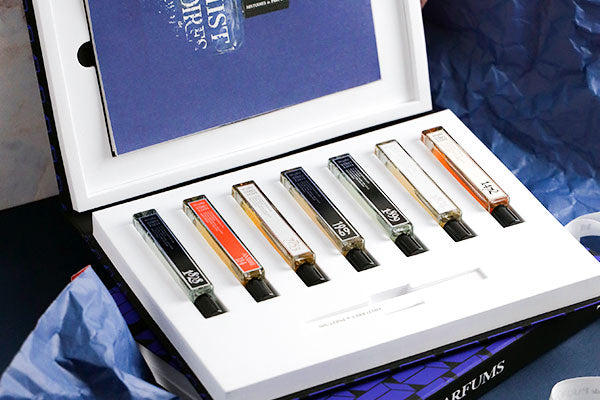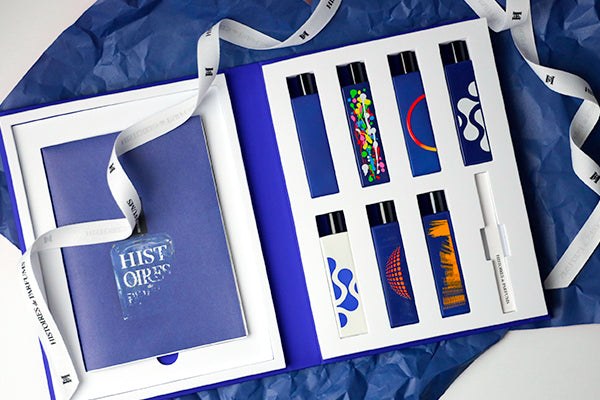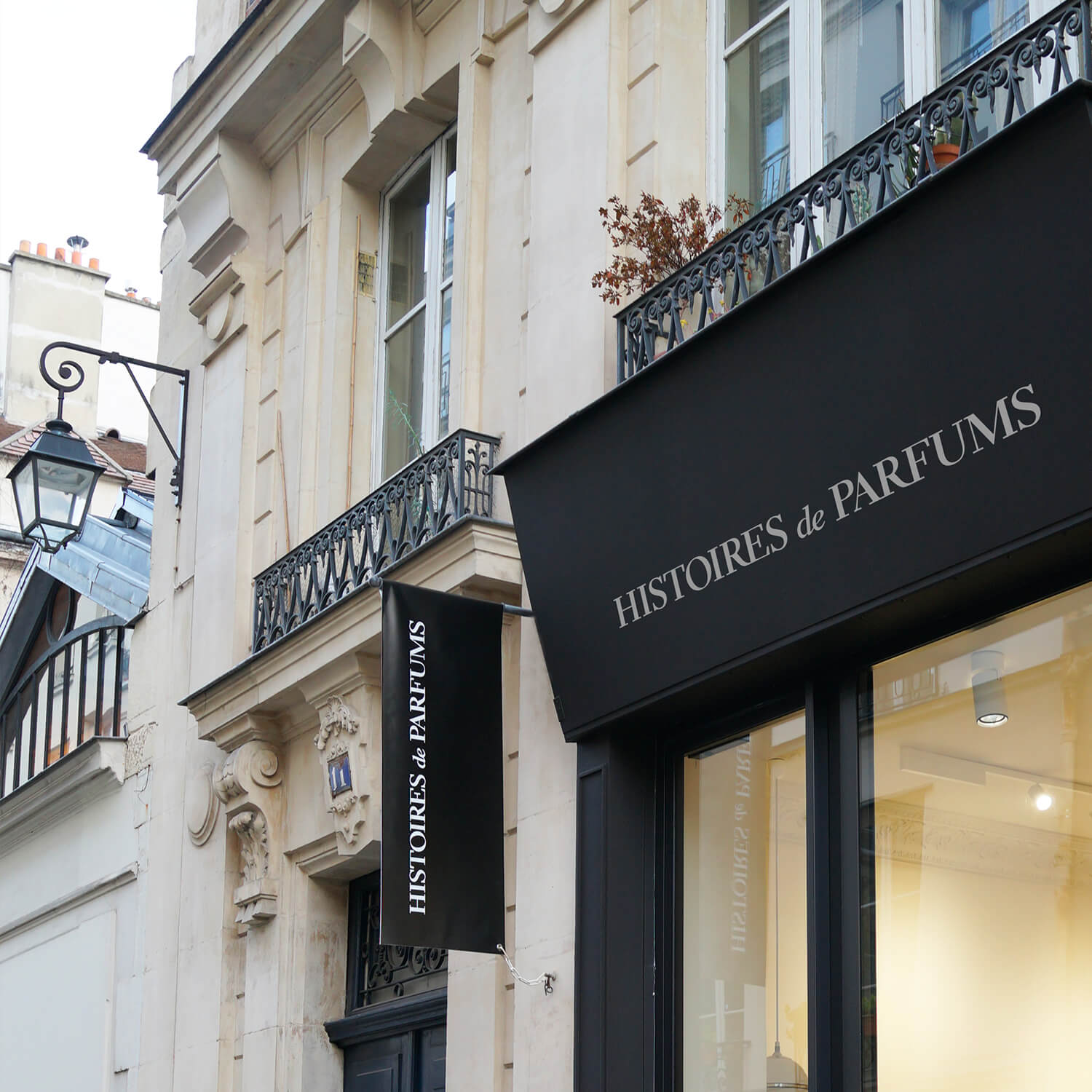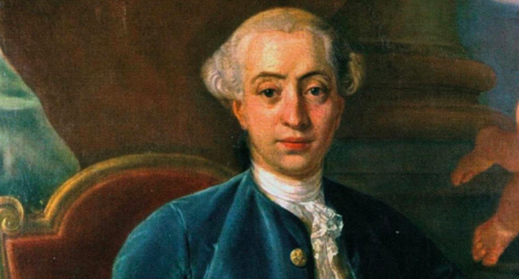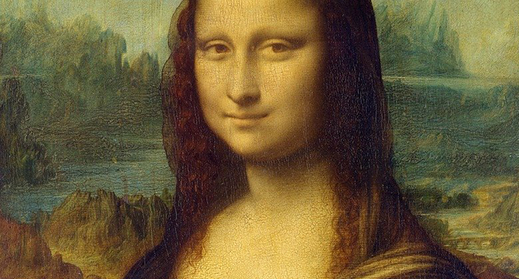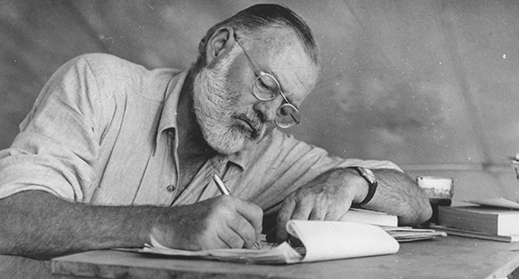
1899 — Ernest Hemingway

In the July heat of 1899, the great American novelist Ernest Hemingway was born. But Hemingway’s expanse was beyond what is typically considered “American.” He would live to see many countries, wars, women, and bars—and he would live to write even more words. 1899 is a sophisticated ode to virility, storytelling, and a stiff drink. With hard edges surrounding a sensitive, nuanced interior, 1899 is Ernest Hemingway in a bottle.
Hemingway had a penchant for writing from a young age. He wrote on sports for his school newspaper, the Trapeze and Tabula, and upon graduation, he began working for The Kansas City Star, a newspaper that some credit for Hemingway’s unmistakably simple and direct prose.
In 1917, the United States entered World War I, and ever the countryman, Hemingway jumped to enlist. While his imperfect vision barred him entrance to the military, he positioned himself as an ambulance driver to aid the war effort. In 1918, he was injured at the Fossalta di Piave, the Austro-Italian front. While recovering in a Red Cross hospital, he fell in love with his nurse Agnes von Kurowsky. The young Hemingway proposed, but she declined. Sources differ in their explanations of why, but even so, photographs and letters evidence their connection. The destruction, injury, love, and loss of this first world war would remain with Hemingway long after peace was achieved.
At 20 years of age, Hemingway returned to Michigan where he met his first wife Hadley Richardson and began work for the Toronto Star. Soon the couple moved to Paris and Hemingway joined fellow “Lost Generation” expatriate authors Gertrude Stein, F. Scott Fitzgerald, and Ezra Pound. His circle also included international talents James Joyce and Pablo Picasso. The romance of the City of Light and his creative comrades inspired Hemingway to begin honing his craft. He debuted his talent with the short story collection In Our Time, first published in Paris in 1924.
The Sun Also Rises, loosely about expatriates from the postwar “Lost Generation” existing in France and Spain, pondering the meaning of life after WWI, was published in 1926 and based upon a 1925 trip to the Festival of San Fermin in Pamplona, Spain. This story reflected Hemingway’s past and present narrative, while at the same time elevating his literary future, ushering him into newfound fame and complexity.
Hemingway soon remarried his mistress Pauline Pfeiffer and moved back to the United States, settling into the tropical flora and fauna of Key West with a thriving colony of polydactyl cats. Here he indulged in local bars—rum, gin, champagne, and whiskey included—and deep-sea fishing alike. In 1929, Hemingway wrote A Farewell to Arms, a beautifully tortured story, inspired by his experiences of injury, romance, and despair in WWI. With appropriate disillusionment, Hemingway explored the meaning of love, loss, and the futility of war.
Hemingway continued his writing whilst big-game hunting in Africa and attending bullfights in Spain. “Don’t bother with churches, government buildings or city squares,” Hemingway said, “If you want to know about a culture, spend a night in its bars.” Indeed Hemingway embedded himself in local culture (and drink) as a correspondent during the Spanish Civil War in the late 1930s. This inspired For Whom the Bell Tolls, an alternate exploration of war highlighting camaraderie and heroism. On his travels, Hemingway met Martha Gellhorn, a fellow correspondent and his future third wife.
Gellhorn and Hemingway settled in a farm near Havana, Cuba, however before long Hemingway was deeply involved with World War II. He served as a correspondent, spy, and infantryman, witnessing events such as the D-Day landing and leveraging his previous knowledge of war. Hemingway met Mary Welsh, another correspondent, and his future fourth wife. Hemingway returned to his farm in Cuba and, while alternating between daiquiris and writing, he produced the philosophical The Old Man and the Sea in 1952, finally securing himself the Pulitzer Prize.
When asked about the function of his art, Hemingway responded “From things that have happened and from things as they exist and from all things that you know and all those that you cannot know, you make something through your invention that is not a representation but a whole new thing truer than anything true and alive, and you make it alive, and if you make it well enough, you give it immortality.” This, and that writing and alcohol don’t mix: “you have to do that cold.”
1899 is a crisp fragrance for the insatiable, yet discerning wanderer. Opening notes of Black Pepper and Juniper crystallize in a suave floral heart of Orange Blossom and Iris. A crescendo of Cinnamon heats up the opening blend of cold spices and together they stick around like burrs nestled in soft paperwhite petals. 1899 is war and peace, violence and love; it is Hemingway—a man with heart and soul as bottomless as his drink. Finally, a radiant, boozy Vanilla hooks a smoky, Javanese Vetiver. A deep descent into a golden aged rum accord: the drunken Caribbean finale, the Papa Doble in Hemingway’s hand—just as he would have wanted it. 1899 is yours to imbibe and enjoy.
written by Madison Hofert

